Early signs point to a Latino wave for Democrats
LOS ANGELES — With less than one week to go, this year’s most sought-after group of voters is also the hardest to predict: Latinos.
For months pundits have speculated about whether notoriously low-turnout Latinos — traditionally Democratic, presumably angry at President Trump and eager to rebuke his Republican Party — would “show up” this cycle.
Everyone agrees that their impact could be enormous; of the 23 Republican-held House districts that Hillary Clinton carried two years ago, 11 have populations that are at least 20 percent Latino — enough, in theory, to push Democrats across the finish line.
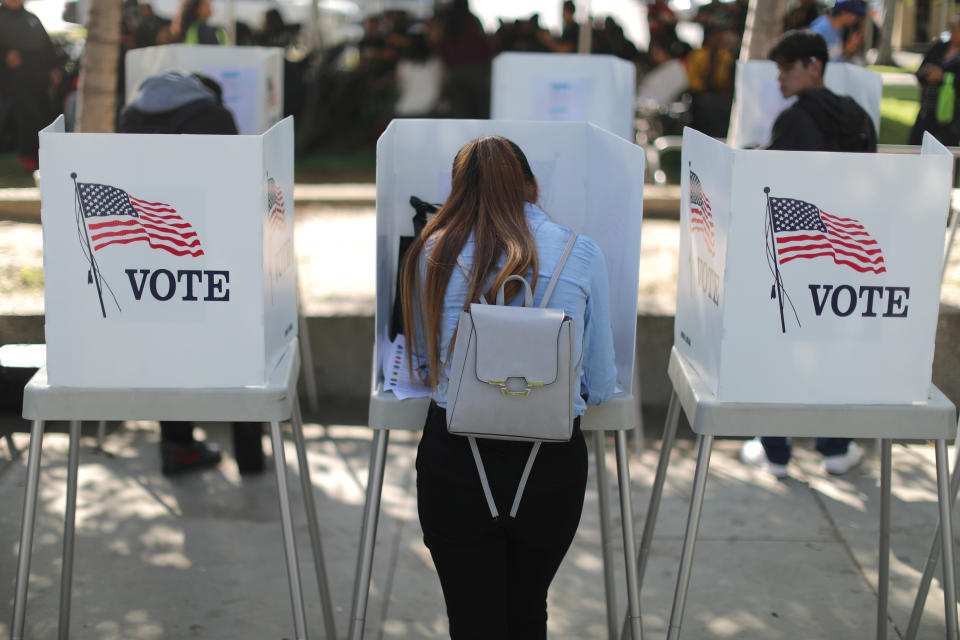
“With whites you already know they’ll be voting at a decent rate, even if you wring that towel for every last drop,” explains Matt Barreto, co-founder of the polling firm Latino Decisions and a professor of political science and Chicano studies at UCLA. “But with Latinos there’s such a huge drop-off between presidential elections and midterms that the upside can be really huge — if a campaign reaches out and gets it right.”
Where people disagree is over whether Democrats have gotten it right in time for 2018.
As election season winds down, the trending answer seems to be “no.” Last Friday, the New York Times ran an episode of its popular podcast “The Daily” — title: “The Voters Both Parties Are Ignoring” — in which national correspondent Jose A. Del Real pointed out that according to the 2016 exit polls, Trump actually did slightly better among Latino voters than his predecessor Mitt Romney, despite all the predictions about how they would rise up in response to Trump’s nativist policies and rhetoric. How could Democrats expect a better result this time, Del Real continued, when a recent Latino Decisions survey showed that nearly 60 percent of Latinos have yet to be contacted by a campaign?
The following day, influential political demographer Ruy Teixeira wrote a column for the Guardian headlined “Democrats hope Latino voters will help them win. Don’t count on it.”
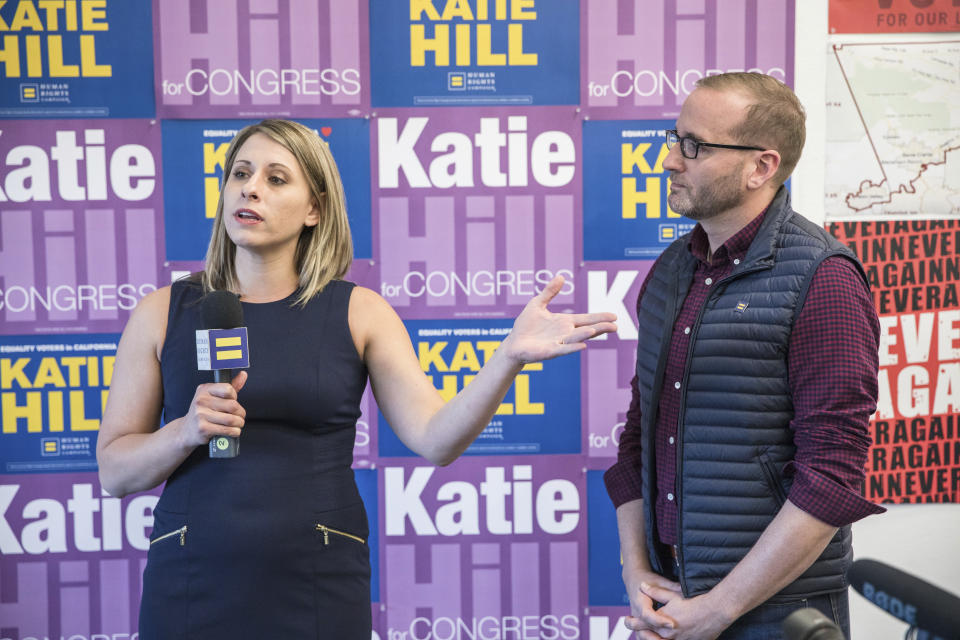
“The mere existence of Hispanic voters is not a magic elixir for the Democratic Party,” Teixeira said. “Latinos are simply too scattered geographically and too variable in their voting patterns for that. And, crucially, for Latinos to deliver the support Democrats need, the party will not only have to contact them, but inspire them to get to the polls.”
Both Del Real and Teixeira made good points. But during a midterm it’s important to remember that what’s happening on a national level isn’t the whole story. In reality, control of Congress will be decided across a few dozen districts where Democratic candidates and committees are campaigning in very targeted ways. Zoom in on that map and a different picture begins to emerge, especially when it comes to Latinos.
Consider California, where most of the 11 heavily Hispanic Clinton districts Democrats hope to flip are located. In California’s 25th District, on the northern, exurban edge of Los Angeles County, Democrat Katie Hill is trying to unseat Republican incumbent Steve Knight. To the south, in the four districts that overlap Orange County, Democrats Harley Rouda (CA-48), Katie Porter (CA-45), Mike Levin (CA-49) and Gil Cisneros (CA-39) are mounting strong challenges to Republican incumbents Dana Rohrabacher (CA-48) and Mimi Walters (CA-45), as well as the GOP candidates running to replace retiring Republican Reps. Darrell Issa (CA-49) and Ed Royce (CA-39). These districts range from 18.4 percent Latino (CA-45) to 35.3 percent Latino (CA-25) — yet in the last midterm, 2014, Latinos accounted for less than 11 percent of the electorate there, on average.
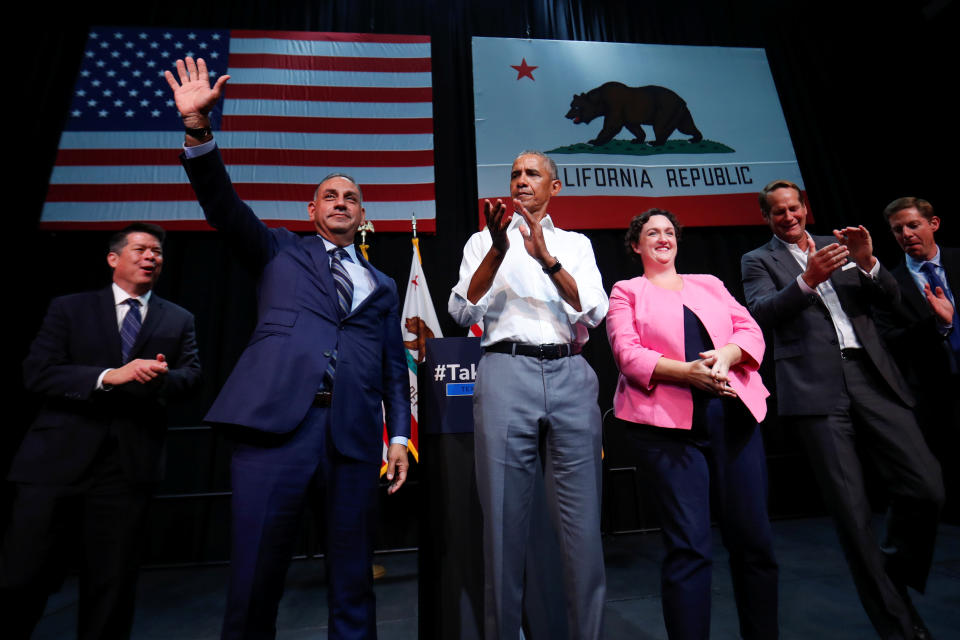
So far, actual voting patterns — as opposed to anecdotes and op-eds — suggest that this year will be different. According to early vote totals compiled by Political Data Inc., Latino turnout in Southern California’s most competitive House contests is already far outpacing 2014 — even equaling 2016’s presidential-year turnout in some cases. At this point in 2014, for example, Latinos in CA-25 had cast less than 11 percent of all ballots; right now, that number is hovering around 15 percent, just like in 2016. In CA-39, Latinos’ early vote share has grown from 12.2 percent four years ago to 16 percent today — less than half a point shy of the 2016 benchmark. And Latino voting levels have increased in CA-45, CA-48 and CA-49 as well. (PDI compiles its figures using lists of voter surnames and “country or state of origin” data on registration forms.)
Such across-the-board increases in Latino turnout jibe with election results from earlier this year. In June, Latinos made up 21.2 percent of the primary electorate in California’s 39th Congressional District — a nearly 8 point jump from 2014. Subsequent reports by UCLA’s Latino Policy and Politics Initiative concluded that the “Latino vote increased more than any other demographic in Los Angeles County from June 2014 to June 2018” and that “in Orange County, ballots cast in majority-Latino precincts were up over 2014 numbers by as much as a 245 percent.” And California isn’t alone: A new analysis by University of Florida Professor Daniel A. Smith finds that Latino early vote there has tripled in 2018 compared with 2014.
This is not an accident; both Democratic candidates and the Democratic Party are “definitely doing more to reach Latinos in 2018 than they did in 2014,” according to Barreto. The Democratic Congressional Campaign Committee (DCCC) has invested nearly $30 million this cycle in contacting, organizing and turning out Democratic base voters, including Latinos. It has conducted Latino focus groups in California, Colorado, Florida and New Mexico. It has hired at least one Latino field staffer in 29 California districts — 11 of whom are currently directing field, get-out-the-vote (GOTV) or canvassing operations. Each heavily Latino district boasts its own Latino constituency organizer, who engages with churches, businesses and other community organizations. And the DCCC also just released its first-ever televised Spanish-language get-out-the-vote ad in Southern California, which will continue running through Election Day.
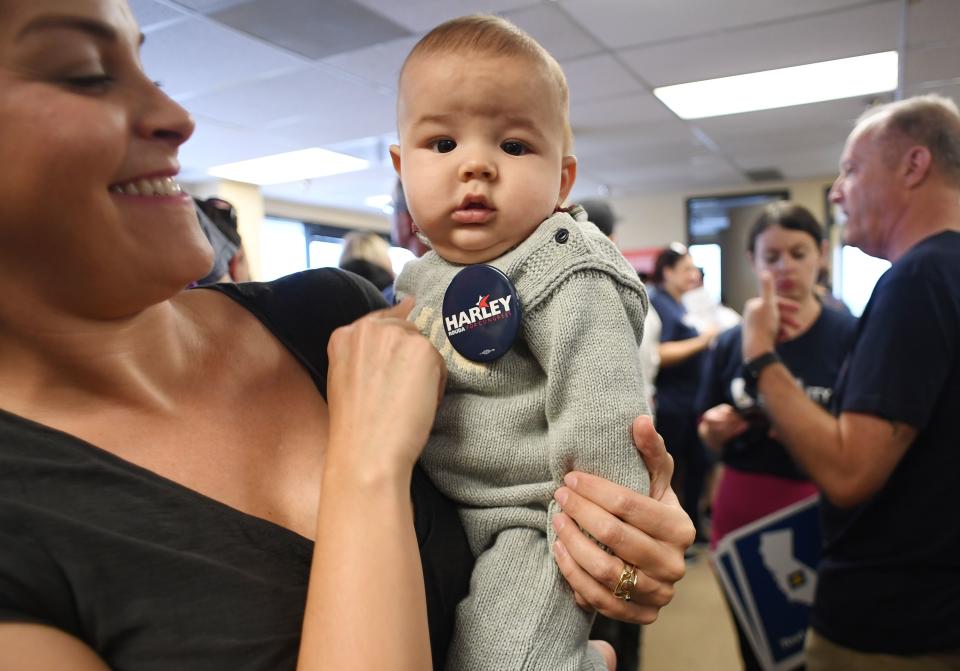
“Between our efforts on the ground and through paid media, these voters will hear from us more than 100 times in the closing 60 days,” estimates DCCC spokesman Drew Godinich, who works out of the committee’s western headquarters in Irvine, Calif. “You can’t just look at the national numbers and draw conclusions about Latino voters. You have to look at the districts where we’ve invested a lot of time, energy and money.”
The campaigns are on the same page. In CA-25, Democratic candidate Katie Hill has been partnering with organizations such as CHIRLA (the Coalition for Humane Immigrant Rights of Los Angeles) Action Fund and hosting events with civil-rights activist Dolores Huerta and California Rep. Linda Sanchez; her campaign has also created a bilingual phone banking and texting program that allows its Spanish-speaking volunteers to connect with Latino voters.
“We’ve been heavily focused on reaching voters who’ve never voted before,” says Lindsay Bubar, a strategist and spokeswoman for Hill. “This district is nearly 40 percent Latinx [a gender-neutral term for persons of Latin-American heritage], many of whom are low-propensity voters. One of our campaign’s primary goals is to make sure those voters know that Katie will ensure they have a voice in Congress.”
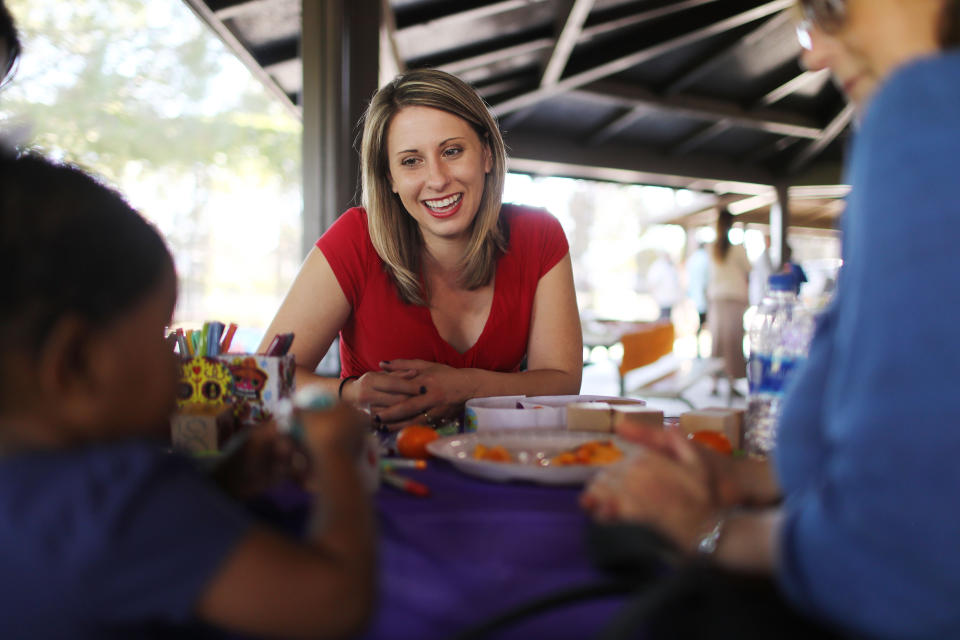
The question now, according to Barreto, is not so much whether Latino turnout will increase where it matters most. “It’s going to be higher than ’14,” he insists. The question is whether “it’s going to be substantially higher” — that is, high enough to actually get Democrats elected and potentially flip the House.
“All of these candidates are going to require significant increases in Latino voter turnout in order to win,” Barreto says.
The meaning of “significant” differs from district to district. But the latest polling suggests that Latinos may be poised to deliver the kind of numbers Democrats need. On the eve of the 2014 midterms, just 35 percent of Latino voters told Pew Research that they were paying “quite a lot” of attention to the upcoming elections; the latest Pew poll puts that figure at 52 percent now. Even more Latino voters — 55 percent — say they are “more enthusiastic” about voting this year than in previous years.
Few of them, meanwhile, are enthusiastic about voting for Trump’s GOP. As Eric Levitz of New York magazine wrote in his summary of Pew’s findings:
Two-thirds of Latino adults say the Trump administration’s policies have been harmful to Hispanics; half have serious concerns about their “place in American society” now that Trump is president (up from 41 percent in 2017); 55 percent say they are worried that either they, a family member, or friend could be deported; 69 percent disapprove of Donald Trump; and 63 percent of registered Latino voters prefer Democratic congressional candidates to Republican ones, up from 57 percent in 2014.
The latest NALEO Educational Fund/Latino Decisions tracking poll may be even more clear-cut. Seventy-two percent of Latinos say they have an unfavorable opinion of Trump. Sixty-two percent say it’s more important to vote in 2018 than it was in 2016. Sixty-three percent say they are “almost certain” to vote next Tuesday, with 15 percent saying they’ve voted already. (In California, those numbers are even higher: 66 percent and 18 percent, respectively.) Finally, a full 73 percent of likely Latino voters say they plan to vote for Democrats — a sign that Latinos are “self-mobilizing,” according to the pollsters, whether Democrats have contacted them or not.
Marisol Chavez, for one, insists that those stats reflect what she’s seeing on the ground. A student at Antelope Valley College in Lancaster, Calif., on the northern edge of CA-25, Chavez, 28, took the year off from school to work as a full-time youth-vote organizer for NextGen America, the progressive group founded by billionaire activist Tom Steyer. So far this cycle, Steyer has spent more than $40 million on various candidates and causes, one of which is millennial mobilization; to that end, NextGen has registered nearly 260,000 voters aged 18 to 35 nationwide — a total that includes 28,000 in California alone, more than 60 percent of whom self-identify as Latino.
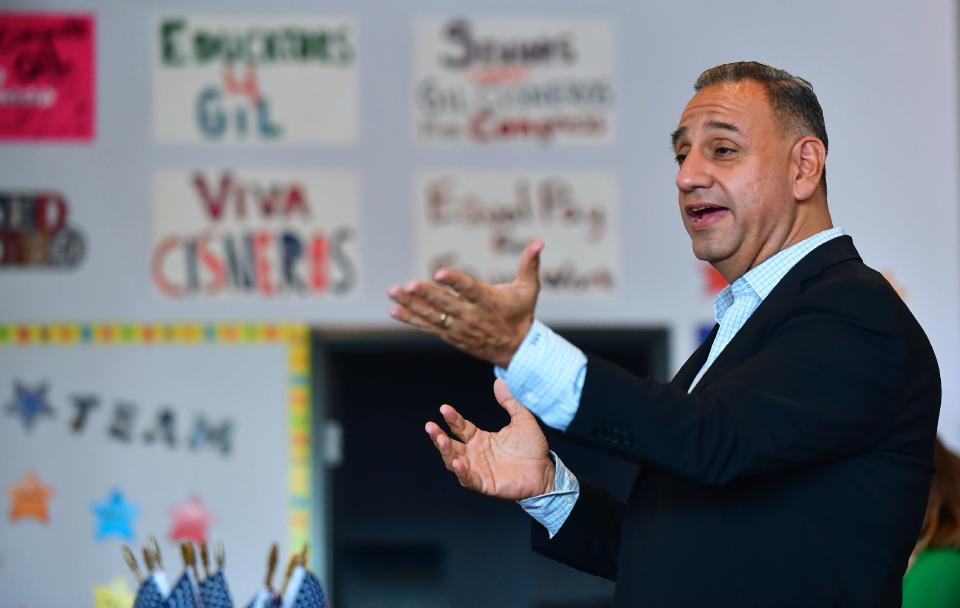
Since last spring, Chavez has been running the show in CA-25: scheduling meetings with teachers and principals to preregister high school seniors and juniors; hosting organizing and recruiting events; answering questions on campus about polling places and California’s vote-by-mail process. And though she hears “a lot” of the usual excuses — “my vote doesn’t matter” and so on — she just as often encounters young Latinos who “feel that it’s so painful to see families being separated at the border and kids thrown in cages that they’re empowered to vote and fight for them” in response. All in all, Chavez and NextGen have registered 3,000 new voters in CA-25 alone.
“It’s going to be a lot different,” Chavez insists. “I do feel it already. A lot of people who weren’t voting before are way more involved now. They’re politically active. My friends who weren’t voting in the past will be voting this time around.”
Chavez, however, won’t be. Born in Mexico City, she was brought to Palmdale by her parents at the age of “3 or 4” — and even though she can’t remember living anywhere else, she isn’t allowed to vote in a U.S. election. And so, frustrated by the challenges she and her fellow Dreamers face, Chavez has found a different outlet for her political passions.
“It will be extremely hard,” she says when asked how she will feel on Election Day. “It is so emotionally heartbreaking that I can’t vote. But I do feel like I’ve found my voice and touched people by organizing. For me, knowing that lots of people are going to vote because of me — that’s even bigger than voting myself.”
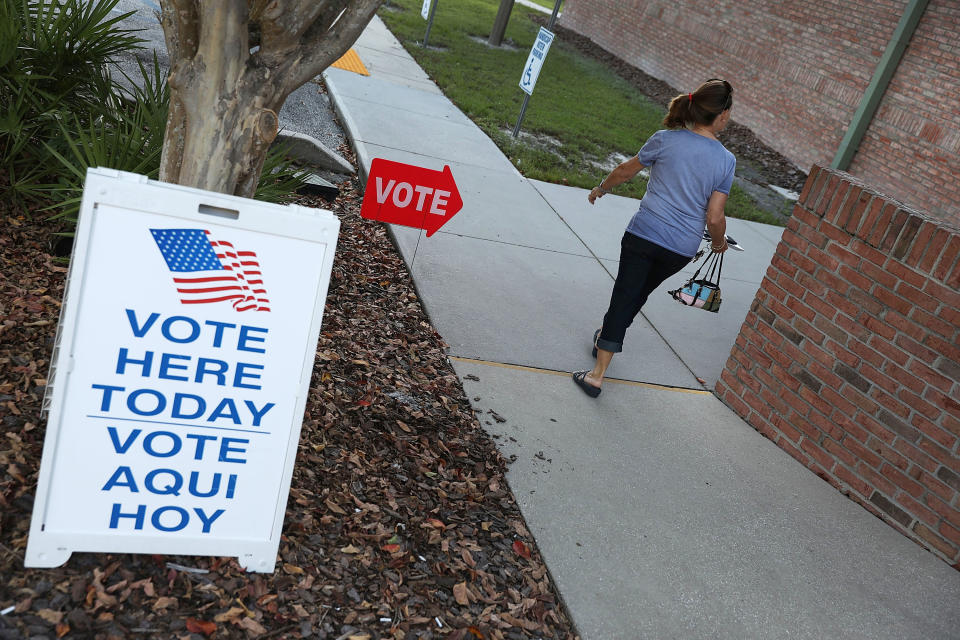
_____
Read more Yahoo News midterms coverage:
In deep-red Missouri, McCaskill pursues voters far off the Democratic beaten path
With racial tension high in Florida race, Trump calls Gillum a ‘thief’
Menendez race pits ethical concerns against party loyalty, and loyalty is winning
Portrait of a moderate district: NJ-11 leans R, but the race leans D
Virginia Republican congressman tries to weather scandal and wave of spending




